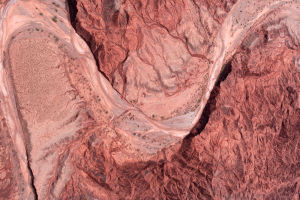Mount Moran (12,610 feet (3,840 m)) is a mountain in Grand Teton National Park of western Wyoming, USA.
The mountain is named for Thomas Moran, an American western frontier landscape artist. Mount Moran dominates the northern section of the Teton Range rising 6,000 feet (1,800 m) above Jackson Lake. Several active glaciers exist on the mountain with Skillet Glacier plainly visible on the monolithic east face. Like the Middle Teton in the same range, Mount Moran's face is marked by a distinctive basalt intrusion known as the Black Dike.
Mount Moran, named for the famous landscape painter Thomas Moran, is the dominant peak of the northern Teton Range. The mountain also reflects all the geologic forces that formed the Teton Range. Ancient igneous and metamorphic rocks comprise the mountain core, sedimentary rocks drape the summit and Little Ice Age glaciers flank the slopes. The most noticeable feature is a vein (or dike) of black diabase that slices vertically across the east face of Mount Moran. The feature appears man-made, but molten magma squeezed into cracks in the existing bedrock almost a billion years ago. Later, erosion stripped away the surrounding rock allowing the dike to protrude.
Landscape artist Thomas Moran accompanied the 1872 Hayden expedition into Yellowstone. Moran produced many sketches and watercolors introducing the Greater Yellowstone area to Easterners. He visited the west side of the Teton Range, but never saw the mountain named for him.
For people who want to try climbing the mountain:
With the easiest route being 5.4 Grade III, and it's remoteness, this mountain should not to be taken lightly. The most famous route is the Direct South Buttress which is included in the Fifty Classic Climbs of North America by Steve Roper and Allen Steck. Here are some of the more noteworthy routes with first ascent (FA):
CMC Route: 5.5, Grade III. The most popular route to the summit offers a wonderful high camp site, a 1500 foot scramble, then a 1000 foot ascent of steep slabs along a vertical black dike. In addition, there is a technical pitch which must be led on the descent to gain the top of Drizzlepuss on the way back to the CMC camp. This pitch is 5.7 or 5.5 depending on the variation, and is the most exposed section of the entire route. The CMC route is normally climbed in 3 days. Day 1 is the approach to the high camp (4-6 hours). The summit day is usually between 10 and 14 hours round trip. Hike out on day 3. Due to the long duration and relative remoteness of this mountain, the CMC route on Mount Moran is considered the most difficult standard route in the Tetons. The CMC name is from the Chicago Mountaineering Club whose members Paul Petzoldt, Joseph Hawkes, Earl Clark, and Harold Plumley, made the first ascent of the route on June 25, 1941.
The first ski descent of the CMC route on Mt. Moran was by Doug Coombs, Bill Dyer, and Kent McBride on May 16, 2002. (Courtesy of Dave Hodge)
Direct South Buttress: 5.7 A3 Grade IV or 5.12 Grade V. Considered a Teton classic and a test piece of Teton mountaineers. 14 pitches. FA Richard Emerson, Don Decker, Leigh Ortenburger; August 30, 1933. First Free Ascent by Stan Mish and Hal Gribble on July 3, 1979. Outstanding trip report on the Direct South Buttress by nerdom.
To get to the base of the Direct South Buttress: Use a canoe to paddle across String Lake then portage to Leigh Lake where you will then paddle to the inlet at the entrance of Leigh Canyon. There will be a nondescript path which can be followed on the north side of the creek for the next mile and a half to the talus slope below Laughing Lion Falls. (Alois Smrz)
Skillet Glacier: 5.4, Grade III, Steep Snow/Ice. This is a year-round snow/ice climb with an additional rock section. See overview section for first ascent.
Northeast Ridge: 5.4 Grade II. Another moderate route to the summit but with a tougher approach. FA Albert Ellingwood and Carl Blaurock on August 19, 1924.
South Buttress Prow: 5.12a/b, Grade V. This route was established on September 29, 2006 by Hans Johnstone, Greg Collins, and Bean Bowers. Supposedly, the highlight of this climb is the 5.12 a/b crux which is a 100-foot splitter crack.


